|
Editor’s Note: Enjoy reading articles about your favorite hobby and engaging with fellow gamers? We do too, but hosting and producing our site isn’t free. Please consider visiting our Patreon page and supporting us at any amount. We put every dollar back into the site and its production, and your help has allowed us to have certain paid article months for our contributors (such as this month). Thank you for your continued readership and your support! Big Bad Evil Guys. They are the ultimate challenge for your players. They bend, break, or flatout ignore rules at will. I explored reddit and found a table of original demon lords. Upon discussing with their respective creators, I did up stat blocks to allow anyone to use them in their own campaign as the final boss for their players. All of these enemies are CR30; powerful enough to provide a solo challenge for a level 20 party on full resources. Of course, these haven’t been playtested in the flesh, so your mileage may vary. Feel free to make any changes you see fit to any of the enemies here when you run them in your own game. 1) Bronocalos - The Demon Lord Of Warped Bones And Emaciation Creator: u/south2012 He causes crippled and sickly babies to be born, and for people to grow hunchbacked, and limbs to atrophy. Simply standing close to him begets weakness in all those around him. Bronocalos has access to powerful magic, including the ability to tear the skeleton straight out of a mortal’s body, and animate it to serve his own whim. 2) Cantus - The Demon Lord Of The Maddening Melody Creator: u/Jacknerik Cantus built his lair beneath a bards college, where he whispered his melody to all that studied there. The melody obsessed those who heard it, who dedicated themselves to spreading it as far as they could. This obsession either lead to those who heard it becoming thralls to Cantus, or to madness for those who tried to resist. The first huge challenge of Cantus is reaching him. His lair is a complex system of intricate design, populated with brainwashed thralls with powerful abilities. Cantus is the “man behind the curtain”, who lives behind his own reputation and followers. However, when he is eventually confronted, he is more than a match for even the most powerful heroes. 3) Sergorius - The Demonic Orc Lord Creator: u/DragonBolt101 Sergorius lives only to destroy everything in his path. The more destruction, the better! As chaos unfolds around him, his powers increase, building adrenaline from this destructive energy. As he gets more and more riled up, he increases in both size and strength. Legends say that blade and spear can never strike the final blow against him. 4) Bazim Gorag - The Primordial Demon Lord Of Chaos And Chance This big bad evil guy is actually not an original one, but doesn’t have scores of history for himself. I took him in a slightly different direction to his existence in the traditional D&D setting, and gave him some overpowered stats and abilities to boot! Bazim Gorag is a Primordial Demon, Lord of Luck, Chance, Chaos, and Gambling. He is a mutual ally of Orcus, and together they want to bring down The Raven Queen, so that Orcus can rule her death domain, and Bazim can inherit her fate domain. Building an appropriate challenge for high-level characters is always a difficult task! How many of your campaigns have reached 20th level? What kind of end-game bosses have you been throwing at your party? And who’s your favourite Big Bad Evil Guy of them all?
Peter is an avid dungeon master, role-player, and story teller. When he's not running homebrew campaigns, he is creating new worlds, or he is reading and writing fantasy stories, forever immersing himself in the gaping black-hole known as the fantasy genre. 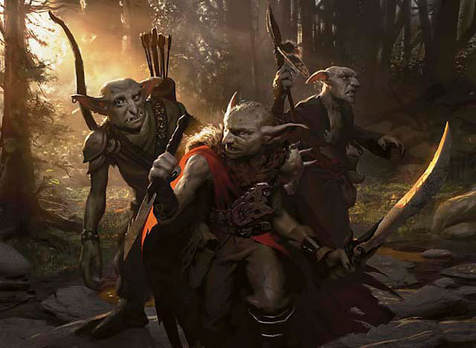 I mean, er… 6 Horrifying ways to improve goblin fights! Look, give me a break. I don’t have anything spooky this week. Bear with me this month and I promise your ol’ buddy Jim will have something sufficiently macabre for you next time. That being said: Goblin Fights! In case you missed it, Cecilia D’Anastasio with Kotaku wrote a insightful article this past week calling out one of the staples of the D&D game: the goblin fight. It immediately put my back up, because I love goblin fights. Then I read the article, and here’s the thing: she’s 100% right. If I’d played in the goblin fights she has (and I have, just not necessarily with goblins; usually orcs) I’d hate them too. I felt really bad for her that this has been her experience with goblins. For me though, goblin fights have always been a whirlwind of entertaining chaos, where you never know what’s going to happen. The ‘Chance’ space of D&D, if you like. So how have I seen people spice up the goblin fight to keep it from getting stale? So glad you asked. (Even if you didn’t ask, I’m going to tell you anyway.) 1) Retaliation! Goblins really only do two things well: suck and die. So you might as well capitalize on their strengths! A canny goblin chief will find it easy to get his warriors to carry something that will harm the enemy if they happen to get killed. After all, the goblins know they aren’t likely to survive more than a single hit, so it’s not like they’re putting themselves in that much more danger, and there’s nothing to assuage the insult of dying like causing some injury on your way out. Explodey vests are always fun (a vial or two of strategically placed alchemists fire works wonders). The goblin takes full damage, of course, but feel free to give the same damage with the dice stepped down a tier (d6 to d4 for example) to the bastard that hit him. Right on the same page are primitive biological weapons. Puffball mushrooms, yellow mold, or any other inhaled poison can easily be put into the same kind of vest (or worn on the head, say, under a bonnet of some type—adventurers love golf swinging goblins). A simple wet rag across the face is usually enough to prevent the gobs from inhaling their own weaponry, but most adventurers won’t be expecting it. Sticky shirts are another play on the same theme. Goblins covered in mimic glue, or giant slug mucus, can make themselves quite a nuisance! Anyone who strikes such a goblin should make a strength check or find their weapon stuck fast to the goblin. (A penalty of -2 to -4 per goblin is probably appropriate.) 2) It’s A Trap! It’s a misconception that goblins are stupid. In reality, they’re as smart as people (no, seriously, go check their stats). I can’t count the number of times I’ve seen a party nearly wiped out because the goblins they thought they were ambushing were actually ambushing them! Lure them in with a couple of chattering goblins, and while the PCs are distracted with their own murderous greed, spring the jump on them. Many goblin fights happen inside or underground. If the goblins are prepared for the attack, it’s only a matter of giving the right signal to plunge the area into total darkness. Most adventurers aren’t carrying their own light sources when they’re sneaking up on someone (makes sneaking somewhat difficult), so it’s easy to drop a couple weighted curtains in a passageway, douse any fire the gobs may have going, and with a single round of actions, the fight is now taking place in total darkness. Goblins are also little bitty guys. What that translates to in almost every version of the rules is a bonus to hiding. Goblins can fit into tiny cracks and crevices, and if they’re setting up an ambush can always take the time to take 20 on camouflaging themselves. When the barbarian charges in to slaughter the two goblin guards he thinks are unaware of his presence, nothing ruins his day like half a dozen attacks of opportunity from the goblins who were hiding in concealed positions along the way. Like all races, goblins have their champions. Fortunately, most adventurers are racists who assume every goblin is weak, cowardly, and stupid, so it’s pretty easy to trick them into getting too close. A goblin with a few levels of barbarian, fighter, ranger, or rogue can prove to be a nasty surprise for an overly cocky adventurer. 3) No, It’s REALLY A Trap! Goblins aren’t stupid, but they are desperate. It’s the fact that their evil leaders put the dumbest and most useless members of their tribe on the front lines that leads adventurers to think goblins as a species are basically just scaly rats. The same selfish leadership means that the majority of the race are poor, hungry, and willing to do anything to improve their lot in life. Fortunately, desperation can breed some diabolical ingenuity. Goblins have no problems evening the odds with a few homemade traps, the more low-tech and sadistic, the better. A iron bar, or a series of them, makes another simple trap. Set four to five feet off the floor, an iron bar makes no difference to the goblins, who can slip right under it with no trouble (goblins topping out around 3’8”), but that same set of bars is a huge obstacle to adventurers, slowing their movement to a crawl, hampering their attacks, and forcing them to fight the goblins in an environment that favors the little guy. The most destitute goblins can even use wooden poles in a pinch. Of course, the most sadistic goblins coat the horizontal poles in grease, glue, or poison, to further torment their attackers. One of the best options is the humble pit trap. Set in a dungeon or along a little used road, a 10-15’ pit trap can often take several key members of the party out of a fight. If the whole mob focuses their attacks on the adventurers still above ground, they can easily mop up any of the luckless sods who fell into the hole. Snake boards are a favorite trap for many smaller species. The idea is simple: take a rattlesnake, nail its tail to a board too heavy for it to move, then put the snake wherever you want. (In a shallow pool of water, a ditch, or some foliage are favorites.) 4) Say Hello To My Little Friend! Paladin mounts, familiars, druid companions: adventurers have a smorgasbord of domesticated animals as their partners in murderhobodom, so there’s no reason goblins shouldn’t get themselves a little piece of the same pie. Their relationship with worgs might be well documented, but that’s far from the only outside assistance they can get. Mimics and goblins make great friends. Since a large goblin tribe always has enough unlucky goblins to throw to the monster if it gets hungry, the mimic doesn’t mind sticking around to prey on the tribe’s enemies. (Get it…sticking around?) They can even help supply glue for the goblins, if they’re well compensated enough. Goblins work way better at range than the do in melee, but adventurers like to confound that by getting up in the goblins faces. One way to counteract that is to give them something else to worry about. Some goblin raiders like to huck a sack full of scorpions, snakes, or rabid animals into a camp before they start opening fire. Larger animals can be stampeded to a similar effect. Even the adventurer’s own horses can be scattered, allowing the goblins to split their focus. If the adventurers try to rally the horses, the goblins circle around and loot the camp; if they fight the goblins, the gobs retreat while a couple of them bring down a tasty horse in the darkness. Dummy treasure is a great way to get rid of or hamstring adventurers, and creepy crawlies can help with that. A chest full of gold with a poisonous viper sitting on top has killed many a thief. A locked door that needs to be battered down is a nuisance, but when a wasp nest has been built up on the other side, it becomes much more gruesome (and goblins employing such a trick will undoubtedly be wearing thick clothes to protect from stings). Some enterprising goblins have been known to collect discarded potion bottles and fill them with all kinds of foulness, usually sewage or offal but sometimes including parasites such as leeches or huge intestinal worms. 5) Turn It To 11 Most humanoids act out of a sense of reasonable caution and an understanding of consequence. Most goblins do not. With the exception of the very few wealthy, powerful goblins, most members of the species are broke, starving, and just desperate enough to do anything to alleviate the situation. This can lead to goblins doing some truly insane things to try and get one over on the bigger races. Fires are easy to start. Torch a village, and loot the burning homes while everyone is evacuating? Why not! To the goblin, a perfectly rational plan. After all, you’ll all be dead soon anyway if you don’t eat or pay a tribute to whatever drow, minotaur, or lich thinks you’re his minions, so you might as well go for it. Goblins like to live in dungeons, which is where all the good magic is, as all adventurers well know. Sometimes a goblin band is lucky enough to find a big ticket item, and just reckless enough to use it. The one guy who uncorks the iron bottle or uses the summoning scroll that’s too high for him might not survive (but he’ll be damn popular if he does!), but it’s sure to give the adventurers something else to think about while the goblins are chopping at their kneecaps. Very, very patient goblins might learn to follow behind adventurers instead of attacking them. With as many corpses as they leave in their wake, such goblins can eat like kings while they track their intended prey. They might get seen, true, but if they do they can just scatter to the winds and circle back later. Eventually, the adventurers are going to run into one of those encounters…one that leaves them injured, tired, and desperate for a long rest. When they’re sucking fumes for spells and hit points, that’s when the goblins ambush ‘em. 6) The Fundamentals I don’t have to run over basic combat fundamentals, right? You already know all this, I’m sure. Goblins fight in mobs. That means they rat-pack the same person (or couple of people), and it means they’re smart enough to flank. Goblins hit better and do better damage at range. Your goblins are doing everything they can to fight that way, even if it means having a few sacrificial lambs hold the line with spears so the ones with slings or bows can have a chance. Don’t fight to the death. Goblins don’t have a happy afterlife to go to, and they don’t place value on ‘noble death’ horsecrap, so have them run when things go belly up. Even if they got caught with their pants down, they can always come back later, armed with some cunning tactic to even the odds. Let’s Wrap it Up The bottom line is, Cecilia was right: there’s no reason to spend an hour on a boring back and forth combat where the enemies never offer a challenge or any kind of entertainment value. Goblins aren’t the big nightmare villains. They’re the perpetual underdog. A goblin fight shouldn’t be something that makes your players say “Oh, what character am I going to play next?” (Hint: that’s jovocs.) What they should be is the wildcard. Goblins live in a world where everything is better organized, stronger, and usually wants to eat them. They survive anyway by being resourceful, bold, and batshit insane. They can easily be the most memorable encounters of your game, if you give them the right tools. Jim Stearns is a deranged hermit from the swamps of Southern Illinois. In addition to writing for the Black Library, he puts pen to paper for High Level Games and Quoth the Raven. His mad scribblings can frequently be found in anthologies like Fitting In or Selfies from the End of the World, by Mad Scientist Journal. Follow him on Twitter @jcstearnswriter. Picture Reference: http://www.fanpop.com/clubs/goblins/images/20650336/title/cool-goblins-photo 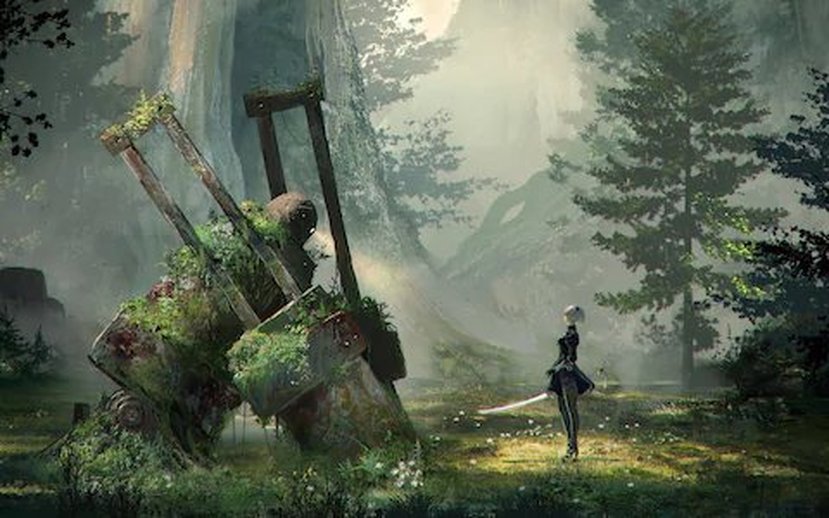 Editor’s Note: Enjoy reading articles about your favorite hobby and engaging with fellow gamers? We do too, but hosting and producing our site isn’t free. Please consider visiting our Patreon page and supporting us at any amount. We put every dollar back into the site and its production, and your help has allowed us to have certain paid article months for our contributors (such as this month). Thank you for your continued readership and your support! -David, Blog Manager Since time immemorial, human beings have used art as a vehicle to express philosophies and ideas of all kinds. Taking a closer look at history, you can see that things like allegories stir up conversation, time and time again, about serious issues both new and old. We all agree gaming is an art, right? This begs the question: what keeps you from using this art form as a differently shaped vehicle for things you have been wrestling with? Everybody who’s reading this just had a different reason pop into their mind, if they can conjure any reason not to at all. With that thought, we arrive at our first stage. Before we dive in, I do want to point out that I’ll be exploring this idea in depth on my website, starting with a post about reasoning. 1) Why Go Through The Hassle? The most important stage is determining that reason for your allegorical campaign’s story arc. You’d be surprised at how many people don’t ask themselves why they do things. There are just as many reasons to go ahead with it as there are not to. To make one fact very clear: I’m not claiming that all games need to be rooted in or inspired by real life events. Funnily enough, stories (especially ones we use for our games) often times find their own way to mirror the real world. Just know that a GM doesn’t have to actively choose that pursuit. It’s no secret that gaming has often been used as a tool to confront difficult problems, fictional and factual, with this post serving as a possible starting point for people who choose to go ahead with this concept. This is a post to get the ball rolling only! There’s a lot of thinking required before deciding your campaign will be an allegory; thinking I highly encourage before you begin your process. 2) Subject and Stance You have a real-life issue (political, emotional, societal, etc.) that’s all encompassing of your brainpower. It could be the age-old question of, “What are we doing here,” or something more relevant for the time. The actual subject is just as important as where you stand on the matter, both things should be considered equally. Good practice for any person who thinks is to write down the major questions about the subject. Be challenging, ruthless to yourself even. Ponder long and hard in order to define your stance on the subject. Regardless of your findings, your personal stance is not the important part of your allegorical game! Remember this, recite this to yourself in the mirror every morning while you’re brushing your teeth. The goal of an allegorical game is to pose a loaded question that the players should challenge themselves on, not to pose a question that directly challenges them. Diametrically opposing your friends’ viewpoints is generally a bad idea, even more so when using a non-sensitive medium to open lines of communication on a potentially sensitive subject. The subject and stance together serve as the starting point for you to write your content, a general idea of the problems your characters will face. Coming to your personal stance serves only as a reference point to interpret how you players take it all in later. Always take your players’ personal experiences into consideration when determining your subject. Always, always, always; I can’t stress it enough. If that subject may cause issues, even when hinted at in the most subtle of ways, don’t use it. If you don’t know whether it’ll cause a problem, you have two options: Scrap it, or make a private inquiry. In situations where the latter is not comfortable and/or possible, simply choose the former. Period. 3) Delivery With the subject and stance already determined, it’s time to decide how to deliver the issue. Long story short, your subject should never slap your players in the face. If you outright ask them your big question, or even present your dilemma in a too overtly obvious way, it could do a number of things to your game. Worst case scenario, all your players see it, get angry, and call you on your shit. Then your game night is ruined, everybody is either going to want to argue or debate the topic, and at the very worst, someone leaves the group or it just disbands all together. Pretty high stakes, if you ask me. Of course, that situation assumes that your players have strong views, disagree with you, and don’t want this in their game. This brings us back to a basic piece of advice that every GM has said millions of times: Know your table! That simple phrase sums up the delivery of your allegory nicely. Of course, there’s more though. Make your delivery digestible, focused on the game and story itself (opposed to your subject), and fun. If any of these elements are missing, your allegory will fail in one way or another. Maybe not immediately, but it will fail. In addition, your overall delivery should have small bits of your own view and opposing views available within the story itself. Not only does it add some reality to the situation, but it masks your stance while still presenting the subject. Be wary of stereotypes, as they will show that you’re hiding behind the curtain. This can be delivered through NPCs most easily. Much of the advice in the NPC field is directly applicable to this kind of game and should be considered seriously. Mannerisms, statements, demeanor, clothing; all of these things should reflect the character’s stance on your subject in a subtle but understandable way. If a detail you give your NPC is pointing too overtly to the subject, add some layers. Putting these bits under layers of seemingly unimportant detail is the best way to set up for a gentle landing of the subject you’re trying to show. Again, you want your players to arrive at the subject on their own. These rules also apply to environments, situations (comfortable or sticky), consequences of actions and all manner of other things that take place within a story. Subtlety is key. Immersion should hide your subject in plain sight, as your stance should only ever be revealed outside of both game and the table. This is a game, fun is the primary purpose. In addition to the silence of the subject, there should be a climax where your subject comes out from the background, in the most miniscule sense. Turn the volume from four to a solid five-and-a-half. In such a way where it’d be akin to you pointing at someone on their phone a quarter mile away from you, asking your friend, “What do you think they’re reading?” Some friends will say that they don’t see who you’re talking about, some people will be sour that the person is on their phone instead of living the moment, and other friends will happily entertain the infinite possibilities of what media that person is consuming. Problem is, do you know which of your players fall where? 4) Reception This is the most important part of your allegory! The subject? Sure, can’t have the allegory without it. Your stance? Well, it does define how you present the many facets of the situation, after all. How about delivery? Landed more gently than someone in their bed when they’re not in the mood for sleep. At the end of said delivery, if you’re not receptive to how the players, your friends, are affected by your game, then what was it all for? When this point comes and you’re not receptive to the impact, then all you did was stand up on a soapbox and talk about a problem. If your point was to show people a subject, and even potentially your stance, without consideration of their own resolutions, you’re just being a jerk. Instead of going through the effort of making a whole game centered around your subject, you could’ve just had a one-sided conversation. Don’t make this mistake. Listen to your friends, be open and honest, and most importantly, be considerate. Agree to disagree, if that’s what needs to be done. Stimulate thought, not fiery emotions. When having these conversations, it’s easiest to work through the subject in the context of the campaign, rather than real life itself. Particularly opinionated people may want to specifically talk about it in the context of real life, but it’s up to you to determine if that conversation will be fruitful or not. To take this back from the dire social situation that could be potentially created, let’s ask, “What happens when your players don’t even see anything at all?” Best case is that your game spurs a constructive conversation, but this situation is the middle of the road. You can’t have an opinion on something you don’t know about, can you? Well, you can, not that it’s worth much, but that’s not my point. When the subject goes over the players’ heads, you still win. If they miss the subject, they feel neither positively or negatively about the allegory itself. What makes it a win is that you still confronted an issue with real people, through staged but usually genuine dialogue, and may or may not have benefitted from this experience. Go, you! When nobody else gets it, you did this for yourself in a way whereby everyone gets something out of it. Even if it was just a fun campaign or a way to hang with some close friends. Creating an allegorical campaign is a lot of work, carries a lot of risks, and makes your game art within art. Just as everything, choosing to do it this way comes with pros and cons that could be debated until the sun decides Earth is ready for consumption. A solid piece of advice on the matter: Be very, very, very aware and conscious of exactly what, how, and when you’re doing this. No room for negligence or jest when considering this one, folks. Exercise the muscle of reason, and have fun doing it. But let us not forget what’s most important… Stay Metal! \m/ Sean is the Heavy Metal GM, a freelance writer and blogger that loves the roleplaying games more than life itself. As a person who’s always up for a good discussion, his blog covers general gaming advice as well as specialized advice/homebrew rules for 13th Age RPG. You can find his website at www.heavymetalgm.com. Join the conversation. Picture Reference: http://www.telegraph.co.uk/gaming/reviews/nier-automata-review/ 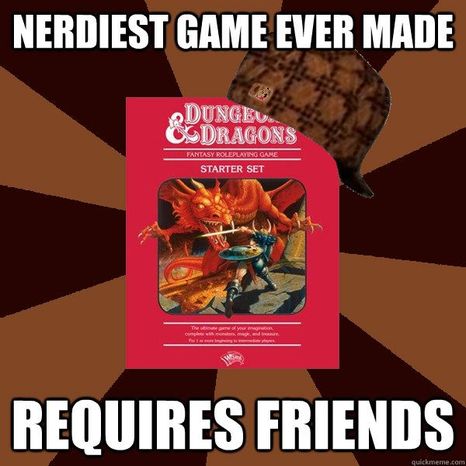 Editor’s Note: Enjoy reading articles about your favorite hobby and engaging with fellow gamers? We do too, but hosting and producing our site isn’t free. Please consider visiting our Patreon page and supporting us at any amount. We put every dollar back into the site and its production, and your help has allowed us to have certain paid article months for our contributors (such as this month). Thank you for your continued readership and your support! -David, Blog Manager “What happened to you, man? You used to be beautiful.” Dark circles under bleary eyes, a permanent scowl, a shortening fuse, and no time for anything… it was time to get out. I remember why I chose to stop roleplaying for a while. Between raising a young family and laying the foundation of my career, there wasn’t a lot of leisure time, and I was spending most of it at a table with a bunch of guys when I would have preferred to be alone. I quit in stages, cutting down to every other week, then choosing to finish off the game I was involved in and call it after that. It was a tough decision to make because I love the hobby, but it was time to go. Between my introverted nature and the adulting required of me, I needed a break. Last week, though, I had the chance to visit my friends while they played a new game. I had never used the system before: Rifts, using the Savage Worlds system. I found myself seeing the hobby with the same eyes I had when I was just beginning. Here is what I saw: 1) The Rules Are Confusing And Stupid Coming into the game as I did with a minimum of background knowledge about the system, watching the game unfold was a mystifying mess of jargon, rules references, and the occasional descriptive moment. My game preferences over the years have gradually drifted from more simulationist games to rules light, and it was cool to have this opinion confirmed. This isn’t to knock Savage Worlds by any stretch; the first game I ever watched was Kevin Siembieda’s Rifts, with its beautiful symmetry,. Given the complexity of the rules, it’s a miracle I ever picked up the dice. Savage Worlds is comparatively simple, but I still found myself mostly clueless about how to fire a weapon. That such a simple action requires some means of gauging success is a basic tenet of all roleplaying games. The reality is, though, that for someone unfamiliar with a particular system, a sheet with esoteric symbols and the ritual of polyhedral throwing can be a barrier to immersion. 2) Roleplaying Is A Huge Commitment To get a good sense of continuity, you probably want to play five to six hours in a two week period. Our group usually played on Sunday afternoons. Those hours with the guys were sometimes more back-to-back minutes than I saw my kids. Needless to say, this was one of the big reasons that I wanted to back out; not only did I need some down time to decompress on my own, but it was hard to justify my commitment to the game. The flip side of this was also on display during my visit. Two of the players couldn’t be there for the afternoon session. I can hardly blame them, and really, in the end I had fun filling in as their character while I visited. When players don’t show up though, the game loses depth and the narrative becomes two dimensional. One of the great strengths of this group is the faithful commitment to Sunday afternoons. I have to admit, it was nice to be able to roll a couple dice, then leave halfway through. 3) More Time Is Spent Goofing Around Than Roleplaying This is obvious to anyone who’s seen the 8-bit reenactment of Dungeons and Dragons. As a visitor, it made no difference to me. In fact, I could’ve caused a few of the rabbit trails. I remember this driving me bonkers as a player, though. Not only are we setting aside hours of time to play this game, but we’re going to spend an hour debating whether the Rebel Alliance spent money to get nice fighter ships or built their fleet from salvage… ARGH! The best game I ever played, in terms of continuous engagement at the table, was one which was recorded for a podcast. It was interesting to see how everyone was on their best behaviour in front of the microphone. Even then there was a lot of space devoted to Star Trek and Firefly references. 4) It’s Super Fun To Do Cool Stuff In the end, I had a lot of fun. I filled in for one of the absent players who was playing a Burster, kind of like a fire-controlling superhero. The character had a bunch of at-will abilities to control fire, which means I was able to do some cool things that solved problems while adding to the narrative and without a need to consult the rules. I spared needless damage to my team, prevented a forest fire, and lit the way up the side of a treacherous, rocky hill to rescue prisoners kidnapped from a nearby village. All in one session. It was great to be the hero, great to have unique abilities, and great to permanently affect the game world. This was roleplaying bliss, and it makes all the rules-ing worth it. 5) The People Make The Experience Ultimately, that’s what it’s about. Even though I don’t play often anymore, I’m still close with the guys. My wife and I just had dinner to celebrate one dude’s anniversary. That very afternoon, I brought a lasagna for another guy, because he and his wife are expecting a baby any day now. At other times, I’ve helped guys move, had them over for dinner, and burned stuff while drinking beer in the backyard. I remember some wisdom somebody once passed on to me: “I don’t roleplay with anyone I wouldn’t want to spend the afternoon with anyways.” That is definitely true about this roleplaying group. It makes all the rabbit trails worth it. So, all that is to say, while I don’t expect I’ll be able to join them for another game anytime soon, I do look forward to getting back into the hobby when time permits. After all: if you’re going to play the lavender elven priestess of Gan’uul, it’s always better to do it with friends! Landrew is a full-time educator, part-time art enthusiast. He applies his background in literature and fine arts to his favourite hobby (roleplaying games) because the market for a background in the Fine Arts is very limited. He writes this blog on company time under a pseudonym. Long live the Corporation! Picture Reference: http://www.quickmeme.com/meme/3uj8ol 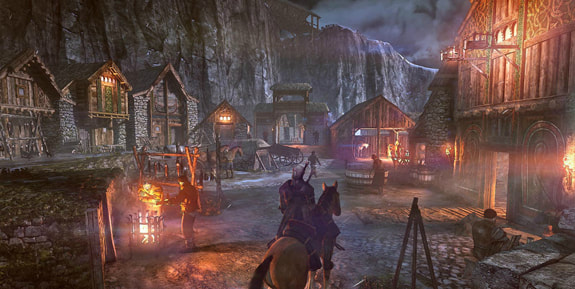 Enjoy reading articles about your favorite hobby and engaging with fellow gamers? We do too, but hosting and producing our site isn’t free. Please consider visiting our Patreon page and supporting us at any amount. We put every dollar back into the site and its production, and your help has allowed us to have certain paid article months for our contributors (such as this month). Thank you for your continued readership and your support! -David, Blog Manager My players are well aware that my preferred method of storytelling involves an open world and a similarly open narrative. I find it supremely satisfying to hand over control of the game to the players and watch them do what they will with the characters, locations, and plot threads that I’ve created. This collaborative process feels more fulfilling to me as a GM than simply guiding players through a preconceived story, allowing them a mild measure of freedom or, at worst, the illusion of freedom. The more challenging road, in the case, proves the more rewarding one for me and those GMs like me, so I’d like to provide a few tips to assist those who enjoy the sandbox style. 1) A Tale Of Two Cities I most often plan out two starting locations for my open world games. Contrary to some of the advice that will follow, these city or location plans should be extensive, including a history of the locale if possible. Several interesting people, places, and plots should be developed for exclusive use within this place to serve as hooks to get players excited and involved quickly. What’s the reason for the second city? Sometimes players want to test your open world very early on, and will want to escape their starting location quickly and with complete disregard for your creations. Show them you mean business by introducing a completely separate area for them to explore with equal depth. You could take it a step further and keep planning cities and townships until your fingers cramp up, but I would recommend only fully preparing the two, then generating a few facts about surrounding spots that players can explore. Let them decide on a destination toward the end of the session, then flesh out that location in detail. 2) Malleable Monstrosities In preparing for your open world game, you’ll want to have a few adversaries set and ready at the starting line. Your players may find themselves running afoul of cultists, underground beasties, or angry mobs as early as their first session, so I recommend preparing some easily adaptable stats that could apply to any scenario. What’s located in Old Man Miller’s basement? Well how about enemy supplement #3, complete with acid breath and physical resistance. Establish the basics of a low level encounter, but leave room for minor variations (such as the aforementioned acid breath). That way you’re not scrambling to look through monster manuals when your players stray from the expected path. The basic stats for the underground monster and an angry cultist don’t vary so much at lower levels, only their unique abilities. Keep those stat blocks around and add a dash of improvised creativity, and you’ve got a monster for any occasion. 3) Roll With The Punches Always expect the unexpected in a sandbox game. Work on your improv skills through practice and, if you have the time and interest, by listening/watching other people GM. Don’t be afraid to suffer a few setbacks in the overarching narrative; allow your players to wander down side roads and experiment with weird situations and creations. The goal of any sandbox experience is to provide players with a real sense of agency that goes beyond which attack they’ll perform on their next combat round. If that means sacrificing some narrative cohesion or dramatic tension, than I would argue that its for a good cause. With time and practice, you’ll be able to maintain momentum in your story while letting players keep the reins. To help achieve this lofty goal, I have one final piece of advice. 4) Lists! Having multiple lists at your disposal can make any game easier, but it really facilitates the operation of an open world. A list of names is a must, but you can also include a list of strange phenomena, a list of random encounters, a list of dramatic turns, and even a list of city features that you can apply to any place the player characters wander off to. I have gone so far to produce a list of side quests that were relevant to the PCs and their connections, so that they could bring their companions on a meaningful (if tangential) adventure while waiting for the main plot to catch up. If you’re feeling really bold, let your players roll on the lists. In one instance, I created a village of assassins that fired diseased darts at their enemies. The players that failed their Constitution Saves rolled three times on three tables to discover the random illness with which they were now plagued. Some combinations proved to be as entertaining as they were deadly! My final piece of advice to prospective GMs is to not fear the open world. Taking just a few preparatory steps can lead you into a world that players not only explore, but also help to create. I think that everyone at the table will find this to be rewarding and enjoyable, no matter which narrative carries them through the game. Share your advice with me and the community! Comments and questions are welcome, as always. David Horwitz is a gamer and freelance writer with an obsession for exploring new forms of leisure. If you’re looking for an inquisitive mind and a deft hand, or just want to chat about gaming, contact him at www.davidhorwitzwrites.com/contact . Picture Reference: https://noplatform.wordpress.com/2013/02/06/can-the-witcher-3-become-a-good-open-world-story-based-rpg/  Editor’s note: Enjoy reading articles about your favorite hobby and engaging with fellow gamers? We do too, but hosting and producing our site isn’t free. Please consider visiting our Patreon page and supporting us at any amount. We put every dollar back into the site and its production, and your help has allowed us to have certain paid article months for our contributors (such as this month). Thank you for your continued readership and your support! -David, Blog Manager Pentex is the everpresent servant of the Wyrm corporation in Werewolf: The Apocalypse. You might also find references to Pentex in other World of Darkness books, but on the whole the evil Wyrm Corp is designed as a nemesis for Werewolves. What follows are a few suggested ways to use Pentex in your games, particularly non-Werewolf chronicles. 1) Ventrue Bait Imagine you are a centuries old vampire who has made careful planning and sound investment your watchword from day one. You’ve amassed a fortune that is unparalleled, even as it is held in various shell corporations and by various minions. Now imagine there is a force working against the interest of your corporation. At first you assume it is another foolish Ventrue, or one of the Toreador muscling in on your action. Then you slowly uncover evidence that this hostile takeover is being performed by a subsidiary of Pentex. You start trying to seed your ghouls into the organization only to find them having ‘accidents’ soon after they take their new job. Pentex has been planning this operation for 100 years. They know this Ventrue has power over an entire conglomerate of economic authority. The trap is set. Will the Elder put his foot farther into the deep end, or will they leave their hard-earned wealth? This Elder is smart, of course, so they hire a coterie of Kindred to investigate this… King Breweries to see what sort of mischief they are about. 2) Take Your Medicine, Young Woman Being a Changeling is amazing. You’ve finally started to feel alive again. You are discovering what it means to be you, and after several rough years feeling like you at 18 feels like an accomplishment. Of course, all of the requirements at court make taking college seriously really hard. In fact, you’ve flunked your entire first semester. Now, thankfully the school is willing to give you another chance and they’ll even expunge the entire semester’s grades if you are able to get a B or higher in your second pass through. Oh, and the school nurse suggests you take some new medication from Magadon Pharmaceuticals to help your concentration. A month later, the motley comes looking for their young Pooka friend. But now she’s hardly herself. Her fae mein seems to have disappeared completely. Where she once felt like herself, now she feels like she has to try and be someone everyone else expects her to be. The only clue the motley has is the daily dose of MagLoft the Pooka takes. How did they do this to her? Why did they? Do they do this to all the Fae that come to this school? 3) Omnipresent and Helpful The hard-pressed cabal of Mages decides to take the night off. They pull into Ten Tickle Ales’ brewpub and have a few drinks. The next morning they take a handful of Magadon Migraine Mauler, and they roll off to face the Technocracy another day. On the way they pass a sign for O’Tolley’s. Man, their burgers aren’t the greatest but you sure get a craving for them whenever you see the ads. After they escape the clutches of another group of Men in Black with their Hit-Mark associate, they fuel up their car at the Endron station at the end of the block. That’s when someone in the cabal starts to think. Who owns all of this? Are these corporations owned by the Technocracy? If not, by who? Do they control part of the consensual narrative? If so, how and why? Why do I feel like I always need a drink when I’ve stopped at the Endron Mart for gas? Is that because I’m actually thirsty or because there is a subtle mind-control effect going on? Wait, did something just slither out of the gas line into my car? Pentex is Everywhere, Pentex is Good. 4) Profit Is Good The Avalon Toy Company makes a lot of great toys. The Red-Eye Air Rifle you got on your 12th birthday is still one of the things you love. You gave it to your son when he was 12, and now it’s your fetter. However, since coming to the other side of the shroud you’ve noticed something about the gun. It has a… sheen on it. The look in your son’s eyes changes when he holds it. It’s not joy, its something… sinister. You can feel something akin to the Tempest upon the whole thing. When you investigate Avalon-R-Us you notice most of the toys are the same. The factory is the same, and the factory on 5th and West Ave sits on the edge of a Nihil. Does Avalon have a connection to Oblivion? Does it want to kill children, adults, or does it want to corrupt the world? Should your son even have the air rifle? The one you love, the one that helps you stay connected to him? Can you convince your friends to help you investigate Avalon, and figure out what is going on? Or will they shrug their shoulders and focus on more pressing matters related to the Hierarchy? Hopefully you can get some mileage from these plot hooks. Pentex is one of my favorite elements of the World of Darkness. Josh is the intrepid Chief Operations Officer of High Level Games. With 20 years of playing rpgs, Josh started with Mind's Eye Theater LARPs and loves the World of Darkness. He runs, www.keepontheheathlands.com to support his gaming projects. Josh is the administrator of the Inclusive Gaming Network on Facebook. He’s currently running a Changing Breeds game and writing a lot. He’s a serious advocate for inclusive gaming spaces, a father, and a graduate from the International Peace and Conflict Resolution graduate program at American University in Washington, D.C. You can also find Josh’s published adventures here and here. Picture Reference: https://nerdarchy.com/world-of-darkness-enemies-garou-pentex/ 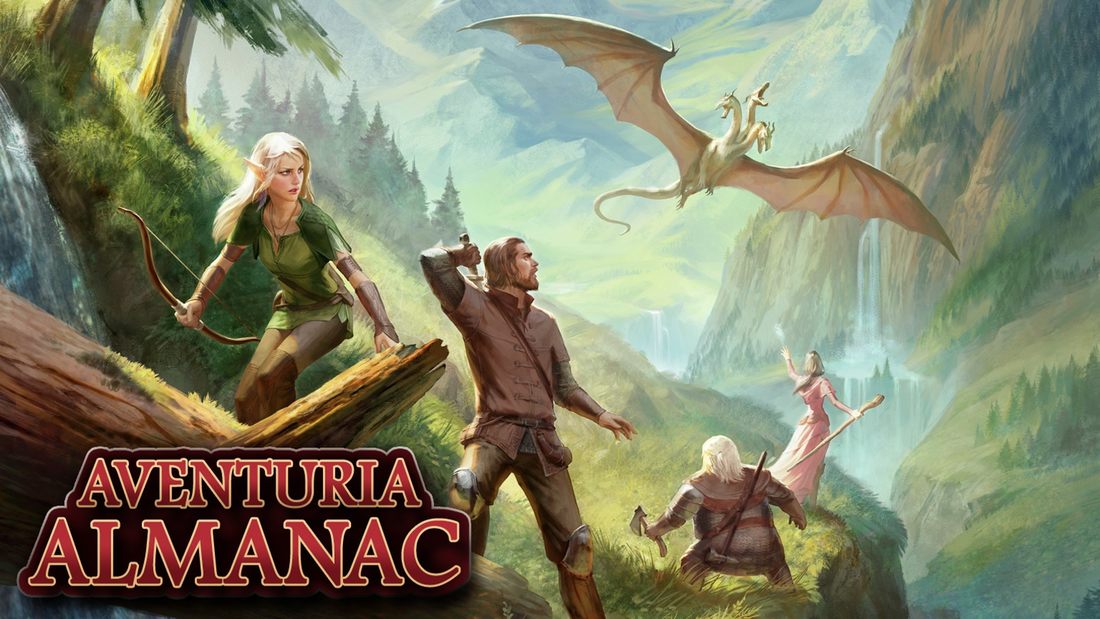 Editor’s note: Enjoy reading articles about your favorite hobby and engaging with fellow gamers? We do too, but hosting and producing our site isn’t free. Please consider visiting our Patreon page and supporting us at any amount. We put every dollar back into the site and its production, and your help has allowed us to have certain paid article months for our contributors (such as this month). Thank you for your continued readership and your support! -David, Blog Manager If my defense of rules lawyers should imply anything, it's that I approach TRPGs as games. Roleplaying is certainly a part of them, but they’re still games, and there are still rules that should be followed by all parties, at least to some degree. I don't like to think of them as dichotomous, though. In fact, without the fluffy parts like setting and character motivation and development, the rules can sometimes seem like little more than just mathematical problems and rolling dice to get excited over how high the numbers go. With all that said, since I've already discussed some interesting mechanics of The Dark Eye, let's take a look at some of these fluffier parts, shall we? 1) Once Upon A Time, In A Land Much Like Our Own The description of Aventuria, the continent upon which The Dark Eye takes place, is described only in passing in the Core Rulebook. They dedicate only a few pages to naming the various regions, and from then on only allude to them as needed (such as in the cultures section). Enter the Aventurian Almanac: a book dedicated to detailing the specifics of the continent. Every region is expounded upon in brief and in detail, usually including some real world or fictional equivalent. As an example, The City States of Thulamydes was inspired by The Thousand and One Nights, while the Southern Sea is meant to be reminiscent of the 1700’s Caribbean. (The heart of what is known as “The Golden Age of Piracy!”) This is a very helpful inclusion that serves many purposes. It quickly establishes the intended theme and mood a given area is meant to evoke, in addition to giving a resource for further reading and possible inspiration. 2) It's Magic, Like I Never Got Hit! A very common debate amongst fans of D&D and other games is the nature of hit points. Are they a numerical representation of plot armor or how much meat and blood you can safely lose before dying? Games that follow this second school of thought in the name of realism, such as World of Darkness, usually wind up with some wonky end results: an ordinary mortal can feasibly be healed from being shot several times in a matter of days. In the real world (that this game is based on) this feat would take weeks, if one could even recover from such a traumatic event. The Dark Eye acknowledges this possibility of these unrealistic traumas and recoveries, such as being able to heal broken bones in a matter of weeks or even days. As it turns out, their retort is that magic saturates the world, and thus wounds heal much faster and with less scarring. It’s as campy as it is cliche, but it doubles as a justification for a GM altering the healing rates if they feel so inclined. If ambient magic can improve a person’s natural healing, it can just as easily obstruct it. Magic could instead begin to dissipate from the world, causing other problems in addition to wounds healing slower. 3) Different Cultures Use Different Weapons The Dark Eye has all your standard fantasy weapons: swords, shields and spears of varying size, and daggers and axes with various uses; weapons that are all generic enough that you could reasonably see them everywhere. It also has some more unusual weapons; exotic weapons, if you will. Weapons of almost every type that are distinctly better in some way. There’s an important caveat, however. Most of these superior weapons are only available to members of the culture that produce such weapons. For example, there are many special weapons made by dwarves, such as the Dragon Tooth, Wyvern Beater, and Iron Forest Crossbow. These are better than daggers, hand axes, and heavy crossbows, respectively, but can only be acquired by Dwarves. Accepting this kind of limitation can lead to some interesting world building. Is it a protected secret of the people, simply not able to be mass produced? Or did nobody think to trade these items with outside cultures yet? Intriguing questions for a GM (assuming these questions aren’t already answered in a splatbook or excerpt I haven’t read yet). This list of exotic and exclusive weaponry also includes implements used by the various churches of Aventuria; holy weapons and blessed weapons entrusted to their priests. Weapons such as the Sun Scepter used by Blessed Ones of Praios, Rhondra’s Crest by none other than the Blessed One’s of Rhondra, and my personal favorite: The Raven’s Beak. The Raven’s Beak is a weapon used by the priests of the Boron, the God of Rest, Dreams, and Death. Among the duties of these priests is to ensure that the dead are properly interred. Should the dead rise, the priests must return them to rest, forcefully if need be, and possibly with the aid of their Raven’s Beak. ...which looks like a decorative claw hammer. Real world inspiration, justification for a lack of realism, and a variety of weapons are just the beginning of what The Dark Eye has to offer/ After all, Aventuria includes analogs of most, if not all, of the known world, and even places where hell literally came to earth. There’s no way a thousand word long article can explain thousands of pages of setting, though, so think of this as a “Your mileage may vary” opinion piece. Aaron der Schaedel is a GM of many different games, but because of the wide variety of games he can run, he’s not used to diving deep into the lore of games. If you find him on YouTube, he’ll probably have some videos up about The Dark Eye by now. Picture Reference: https://www.kickstarter.com/projects/1216685848/aventuria-almanac-the-dark-eye-rpg 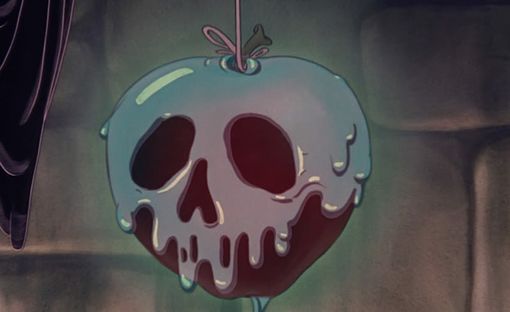 Editor’s note: Enjoy reading articles about your favorite hobby and engaging with fellow gamers? We do too, but hosting and producing our site isn’t free. Please consider visiting our Patreon page and supporting us at any amount. We put every dollar back into the site and its production, and your help has allowed us to have certain paid article months for our contributors (such as this month). Thank you for your continued readership and your support! -David, Blog Manager Milgrak advised me to contact you as soon as you brought him an unusual gown your slain vampiress was wearing, apparently the work of the peerless Borcan fashion designer Bertold Iacomo. On your life, let no one know you possess the Iacomo Rose! It’s not cursed in the typical sense, but it’s hunted by many desperate and resourceful parties, servants of the one who took a thing of beauty and made it a venomous weapon. Many who have vanquished immortal creatures of the night have been unprepared to face the true ruthlessness of mortals in the daytime. I will tell you what I can…. Master poisoner Ivan Dilisnya’s creativity and cruelty have borne strange and bitter fruit that take many by surprise. PC’s with plenty of antitoxin can still fall prey to these stranger facets of Ivan’s poison politics. 1) Borrowed Time Ivan’s inner circle of guards knows that if he dies, he takes with him the formula for Mercy, the temporary antidote that delays the fatal Borrowed Time in their systems for one more day. Of course, these servants cannot travel far without additional Mercy to take with them, but there are rumors that a few have magical delivery methods for long distance travel. Having learned the hard way that some would spend their last day in suicidal revenge, Ivan considers carefully before starting the week-long process of poisoning a new recruit, and prefers condemned criminals who genuinely see the poison as a reprieve. 2) Gravitas Gravis The faux-Darkonese name is painful, but no one would dare correct Ivan’s grammar. Upon hearing of Somnos wine from Darkon, he created his own fast-acting intoxicant to loosen lips. A mind clouded by it is prone to rambling and finds everything funny, but nothing more hilarious than divulging their own secrets. Many screams heard in Degravo are actually the sounds of people recovering, realizing that they have gleefully destroyed themselves with barely any interrogation at all. 3) The Iacomo Rose This blush-colored taffeta gown was worth more than a small farm when Ivana gave it to a foreign agent provocateur to help seduce Ivan. Wise to their intrigues, Ivan used his Envenom ability to infuse the dress with strength-draining contact poison, but the woman inexplicably ignored the effects and fled to Dementlieu with the dress. Now Ivan seeks the dress in the hopes of understanding what went wrong. The lethal poison actually prevents mold and mildew, and if handled with the accompanying unvenomed gloves someone might live long enough to try it on. 4) Varcolac Similar in some ways to catalytic poison, banewort preparation is blended with another plant to make the victim allergic to that plant for several hours. Some of Ivan’s quislings are fond of blending it with wolvesbane to make “varcolac,” which makes it appear the victim is infected with lycanthropy. Victims may isolate themselves from their allies if they believe the ruse, and may draw the attention of monster hunters either way. Rumor has it that Ivan has created similar alchemical preparations that create temporary allergy to a specific metal, such as silver, gold or cold iron. 5) Lampwick A form of catalytic poison combined with ether, naptha and a sample of the victim’s hair, this oily liquid slowly evaporates to create thick vapors that cause one specific person to lose consciousness. The poison runs out faster when burned but the effect is much stronger, and dried tobacco can absorb quite a volume in lampwick and still remain flammable. Many of Ivan’s more subtle hunters are fond of lampwick pipes or cigars, surrounding themselves in clouds of smoke in situations where they might confront a target in public, and even blowing a puff of sleep-smoke as a direct weapon. 6) Night Ride This poison has two possible effects, both diabolically subtle. A single dose up to four hours before sleeping will disrupt sleep ever so slightly, causing the victim to talk or even walk in their sleep. A clever person can manipulate the sleeping victim into confessing secrets, implant a suggestion, or direct specific actions of the sleeper. A double dose will allow the victim to sleep normally to observers, but they will wake exhausted, the poison having prevented them from getting any rest. The former is popular in situations where blackmail is preferable to murder. The latter is generally part of a gaslighting campaign, or to keep a foe from restoring strength. 7) Veridian Ivan’s obsession with eternal youth led him to rumors of a Valachani sorcerer’s elixir of immortality. All attempts to reproduce the formula yielded only spectacular deaths, but Ivan saved one of the failures for when he isn’t concerned about collateral damage or cleanup. A bottle of this bright green liquid grants acid and fire immunity and fast healing, but the victim suffers increasing nausea, interspersed by vomiting monstrous oozes and slimes made from their own dissolving organs. Over the course of three days, the victim continues to live sans spleen, stomach, lungs and finally heart, growing thinner and paler with each purge until they collapse into a featureless puddle. No one knows if the original person’s mind remains intact. If so, and if they are truly immortal, this may be the worst fate Ivan has inflicted on anyone. I don’t mean to frighten you, nor would I extort your property from you. My offer is a fair price for a dress that cannot be safely worn and attracts unwanted attention, and none of the others hunting it will make such an offer. Indeed, you may be lucky if they let you keep your life. Dr. Phillippe Delapont Leyshon Campbell has been playing and writing for Ravenloft for over twenty years, from the Kargatane's Book of S series, playtesting D&D 3E in a Ravenloft campaign, to the ill-fated Masque of the Jade Horror. He married his wife on Friday the 13th after proposing to her on Halloween. By tradition, the first story read at birth to each of their three children was The Barker’s Tour, from Ravenloft’s “Carnival” supplement. Picture Reference: https://io9.gizmodo.com/strychnine-a-brief-history-of-the-worlds-least-subtle-1727903421 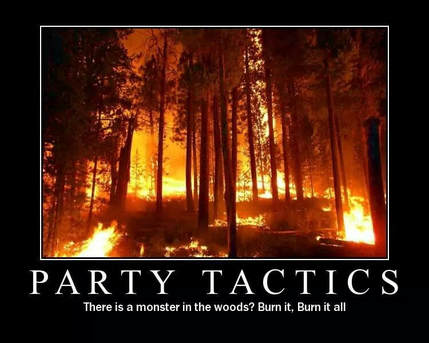 Editor’s note: Enjoy reading articles about your favorite hobby and engaging with fellow gamers? We do too, but hosting and producing our site isn’t free. Please consider visiting our Patreon page and supporting us at any amount. We put every dollar back into the site and its production, and your help has allowed us to have certain paid article months for our contributors (such as this month). Thank you for your continued readership and your support! -David, Blog Manager In the last several years we’ve all witnessed an increasing number of natural disasters in the U.S. and around the world. From record-breaking firestorms in California to a series of violent hurricanes striking the eastern parts of the United States, Mother Nature is upset. If we think of our gaming campaigns, these sorts of things often get overlooked. It’s true that our campaigns should be about the heroes and their stories but those stories are about challenge, struggle, and defeating insurmountable odds. Confronting a master villain and her undead army is one level of challenge. Doing so during a monsoon is yet another level. And what if that disaster was not so natural? Let’s examine some causes of “natural” disasters and see how they can be used to enhance your gaming campaign. 1) The Gods Are Angry! In a campaign where magic is real and the faithful of a deity can be granted the powers to heal and more, gods are a fact of life. If they are remote entities such as in Game of Thrones, it is unlikely that their wishes or influence will touch the mortal realm. But if your gods and goddesses are more like the soap opera of the Greek or Roman mythos, there are countless ways to find yourself out of favor. If you are important enough or perhaps the country you are in offends one of the gods (not enough sacrifice, uttering sacrilege, favoring a rival deity), they might unleash true wrath. The form of this anger depends upon the god. A god of the seas would likely send a typhoon to drown the mortal insects that displease him. A goddess of health and vitality might turn a blind eye to a virulent plague to which no prayers or spells are effective. A god of the earth itself? Well, get ready to rock and roll and perhaps have half your country slide into the sea. The adventure comes in surviving the wrath and finding a way to placate the offended god or goddess. A harrowing quest, a great sacrifice, or a holy crusade against believers of a rival god may end the pitiless disasters. 2) Things Man Was Not Meant To Know If there are deep, unspeakable forces of evil hell-bent on destroying our world or reality itself, delving into their secrets can have drastic consequences. The impact might be everyone in an extended family, a whole town, or even a whole nation. If a mortal were so foolish as to attempt to draw power from such an abyss of evil, to even craft deals with forms the abyss conjures before him, an evil surge might be released of epic proportions. These sorts of disasters would feel less… natural. Storms might bring tornadoes and boiling rain. The earth would quake over and over again, disrupting any attempts to save people or fix the damage. All birds and animals might become hostile and blood thirsty. Closing the gateway to such evil would challenge the mightiest of adventurers while dealing with a world gone mad. 3) I Am All-Powerful! Perhaps great power is all around us, a magic without its own purpose, accessible only to those who sacrifice, toil, and study. If someone makes years of such sacrifice, they could wield tremendous power and bend it to their own purposes. Simply the release of such power for any purpose could incidentally cause huge natural disasters. Some might occur immediately: firestorms, tornadoes, or torrential rains. Other consequences might only appear over time: plagues, drought, and famine. Still, the cause of these disasters would not be apparent. They might even be attributed to natural events. But if our great and powerful mage wished to bend these events to their own purposes, perhaps inflicting them upon countries which would resist his rise to power, we would return once again to great destruction at the will of great evil. Consider if the mage did not expect these far-ranging disasters to come from their magic and inflicted it on their own land first by accident. To divert attention or blame, he might inflict it on his neighbors as well, confusing who is behind the disasters and what purpose they might have. This would certainly create a multi-layered villain that would challenge our heroes. A disaster is a great way to shake-up your campaign world, even reshape it in some ways. Tying it to a classic fight against great evil would make for an engaging and challenging adventure arc. Jim Davenport founded Dragonlaird Gaming Studios in 2005 as a channel for his original tabletop RPG work. He’s an accomplished freelance writer with Knights of the Dinner Table Magazine (as a columnist) from Kenzerco, Margaret Weis Productions (Serenity, Battlestar Galactica, Cortex), and many others. He published Savage Characters Volume 1 a couple years ago and has plans to release a series of Savage Adventures soon. You can find his website at www.dragonlairdgaming.com. Picture Reference: https://www.pinterest.com/pin/339177415659538518/ 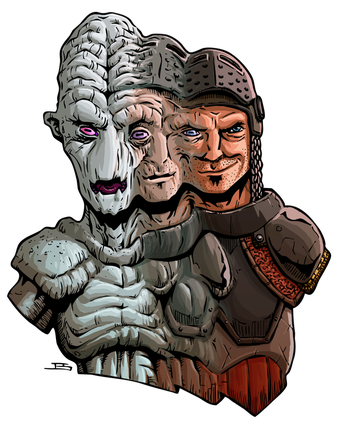 A huge thank you to all our Patrons for their support! All money from the High Level Games Patreon goes directly back into the blog and supporting the writers. Thanks to you all articles are paid this month. Become a Patron today for exclusive patron-only content and first access to High Level Games products. 2018 is upon us. With the new year comes the tradition of self-betterment. Sure, the majority of resolutions aren’t followed through. Most people don’t even make resolutions anymore. Instead we sit behind the cynical idea, “Why should I only make goals at the start of the year when I could make goals year round?” You’re not fooling anyone, you’re not making goals at all. You’re just saying that to be cool. (And it’s working, I think you’re cool.) Today I want to propose some resolutions that are more fun. They’re related to this wonderful hobby, after all. Here are 4 resolutions for your roleplaying hobby. I’m sure there are readers who do all these things every year, but these are all new to me and I’m excited to make them goals for my 2018 in the wonderful world of tabletop rpgs. 1) Play A Class You’ve Never Played Before In both Pathfinder and Dungeons and Dragons I’ve been quite consistent with my class choice. I started with a fighter back when I was in grade 7 and I stuck with that class for a long time. The class was simple and its strategy was sound: “that is big man, me hit big man with sharp stick.” Eventually I branched out and tried something new, a ranger, and let me tell you… it wasn’t nearly as impressive a change as I initially thought it would be. My ranger was ultimately a fighter with a bow and certain enemies they specifically don’t like: “that is green man, me shoot green man with sharp stick.” I’m guilty of this even last year when I started a campaign as a cleric, got eaten by some sort of swamp monster, and resurrected as a barbarian. It’s in my blood, I want to hit evil big monsters with sharp sticks. However in 2018 I want to play a class that never even picks up a weapon. “What’s a sword? All I know is my magic spell book.” My knowledge of Pathfinder has grown exponentially since I’ve started DMing it and now I can’t believe I went so long only playing one class. There are a lot of interesting and cool classes out there to try out, so if you’re like me, make your 2018 about trying something completely new. 2) Play A System You’ve Never Played Before It seems this article is about me admitting to a bunch of my tabletop hidden shames. The only roleplaying systems I’ve played have been Dungeons and Dragons, Pathfinder, and Fiasco. (One of these is not like the other…) I started playing with 3rd Edition DnD and then that transferred over to Pathfinder when 4th Edition came out. Since then it’s just been the go-to game for my friend group. We knew the rules, we enjoyed the game, and we didn’t really find the need to try other systems. Now that my knowledge of the roleplaying world has grown I realized that I’ve been playing the wrong game for what I like to get out of my tabletop experience. I’m not really a dice chucker, I like getting into a character and interacting with the imagined world around me. Thanks to people from this blog and other people I’ve met, I’ve discovered a lot of awesome systems I can’t wait to play. On my agenda for 2018: Viewscream, a Skype based survival horror rpg, End of the World, a game where you play yourself trying to escape the end of the world, Worldwide Wrestling, that one is pretty self explanatory, and Ten Candles, a horror system a friend of mine is running that I’m purposely keeping myself in the dark for. Any others I should check out? Let me know in the comments. 3) Incorporate Physical Props Into Your Game Recently I’ve been feeling that our games of Pathfinder need to feel a bit more tactile. Picking up dice and throwing them down on the table is nice, but it doesn’t really help fully immerse a player into the game. Props can go a long way in making players get themselves into the game in ways they never would before. It requires a little bit more work from the GM, but it’s worth it for the experience it provides yourself and the players. If you’ve never made a prop for one of your games before the first place to start is with simple letters or scrolls the players receive. Imagine the look on their faces when the innkeeper says a letter arrived for them and you pull an actual letter out for them to read. They’ll each want to take turns reading and it makes the experience more believable for the players. It may not seem like much, but for the moments they’re reading the letter it’ll take them away from the table and actually put them in the world in which they’re roleplaying. For me, the prop I’m going to be starting my 2018 with is actual healing potions. We always have people question the effects of healing potions in Pathfinder. My plan to fix this while also immersing my players is buying a bunch of small jars and putting the required amount of d8s inside and labelling it with the matching healing potion. I’m excited to see their reaction when I pull one of those out at the table. 4) Run A Campaign Outside Your Comfort Zone I have only recently started running sessions of Pathfinder, starting with the Mummy’s Mask Adventure Path. That book provides the adventure, but as I’ve gotten later into the campaign I’ve felt more comfortable going off book and providing my own story and twists to the adventure. It’s with this that I get to my true tabletop resolution of 2018. I want to run a campaign outside of my comfort zone. Running a dungeon is where most DMs start. I was one of those DMs. A dungeon is straightforward encounter and the namesake of the game. However my love of the game came from all the roleplaying encounters that I was put in outside of the dungeon. One of my first loved campaigns involved me and another playing being in charge of a small city. We had to deal with negotiations with neighboring cities, balancing the city economy, and making sure the citizens were happy. It may sound dull, but it was an awesome roleplaying experience. Dungeons are comfortable to me. Political intrigue is not. My goal for 2018 is running a campaign based entirely on political intrigue inside of a nation’s courts. If you’re a DM and you’ve been visiting certain themes in your campaigns, why not try something completely new? Try something outside of your comfort zone and maybe you’ll discover talents you never knew you had. Now if anyone asks you what your resolution for 2018 is you can respond with any of these. They may give you a few bizarre looks, but in the end a resolution is just for yourself. A goal inside of your hobby is still a goal, so why not use a tradition as a reason to play even more of what you love playing? I know that’s my plan for this next year. Justin Cauti is a writer and Twitch streamer. He plays board/roleplaying games on the internet at http://www.playingboardgames.tv. Follow him on Twitter for updates on his boring life and writing projects @LeftSideJustin. Artwork Courtesy of JEShields, whose work can be found at https://www.patreon.com/jestockart |
All blog materials created and developed by the staff here at High Level Games Archives
April 2023
Categories
All
|
Proudly powered by Weebly
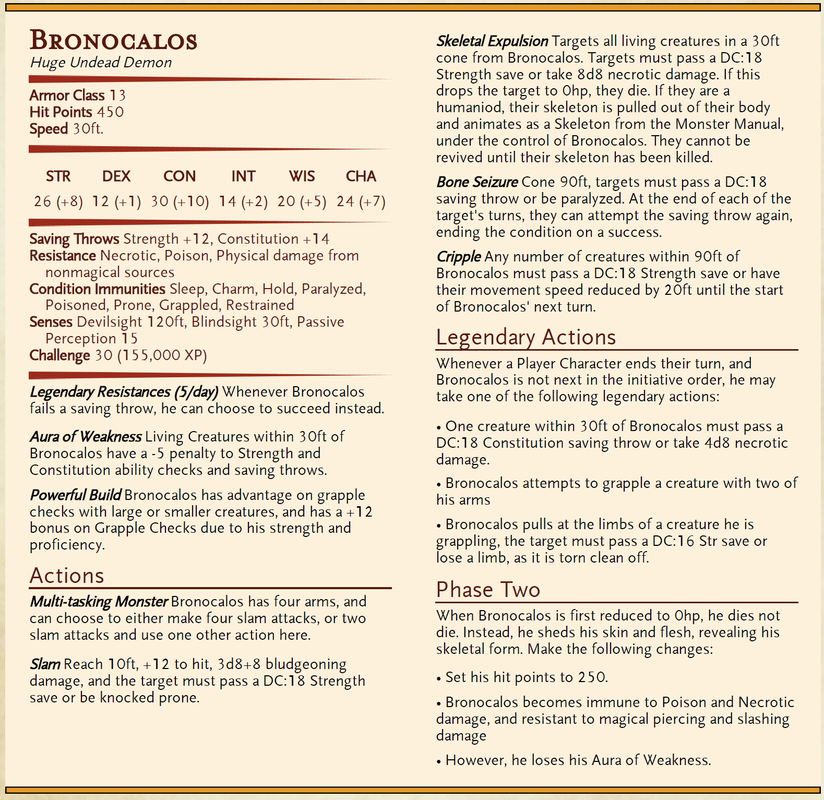
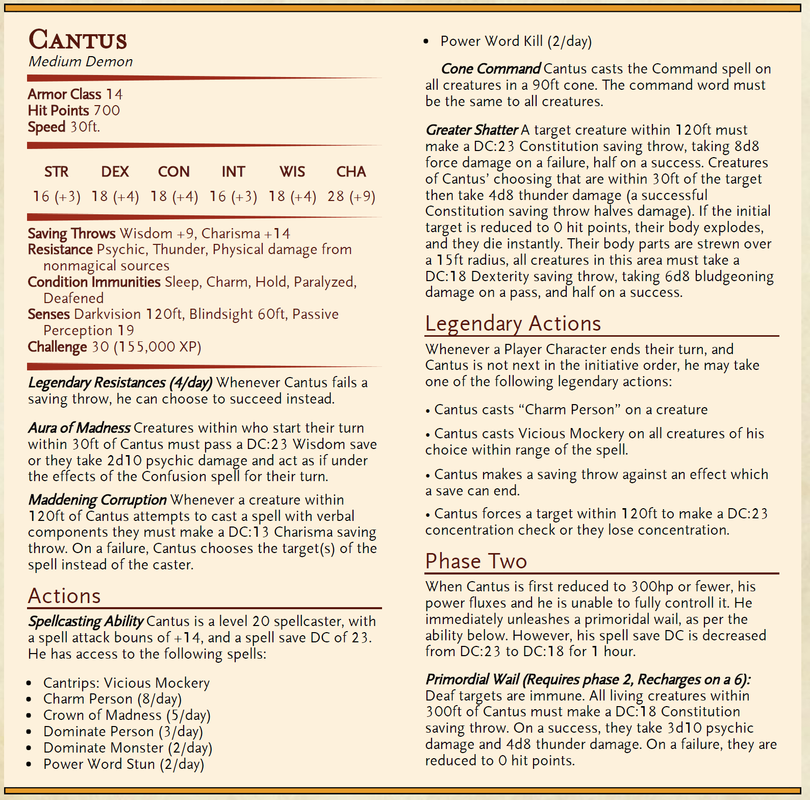
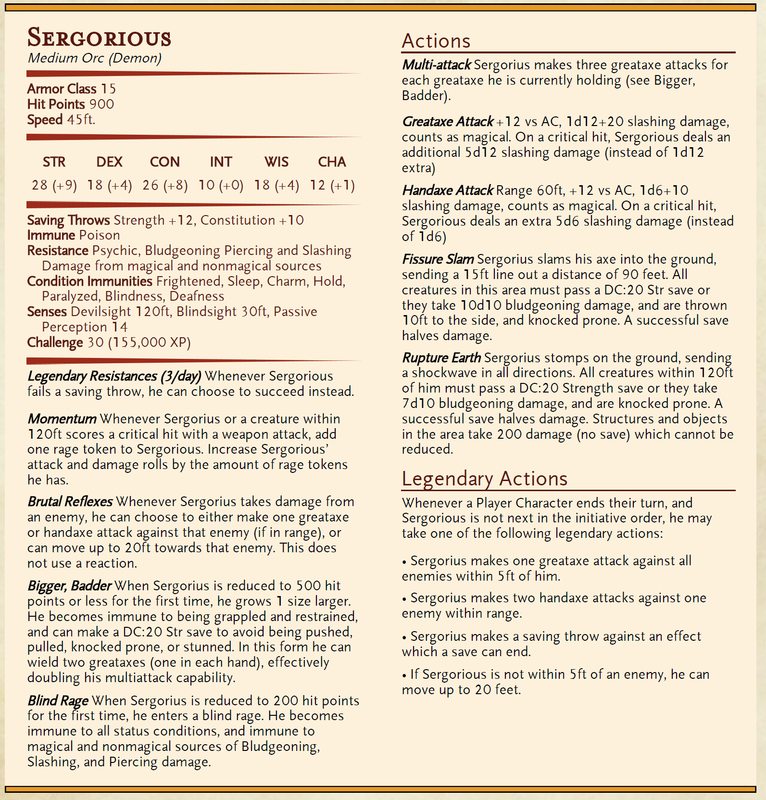
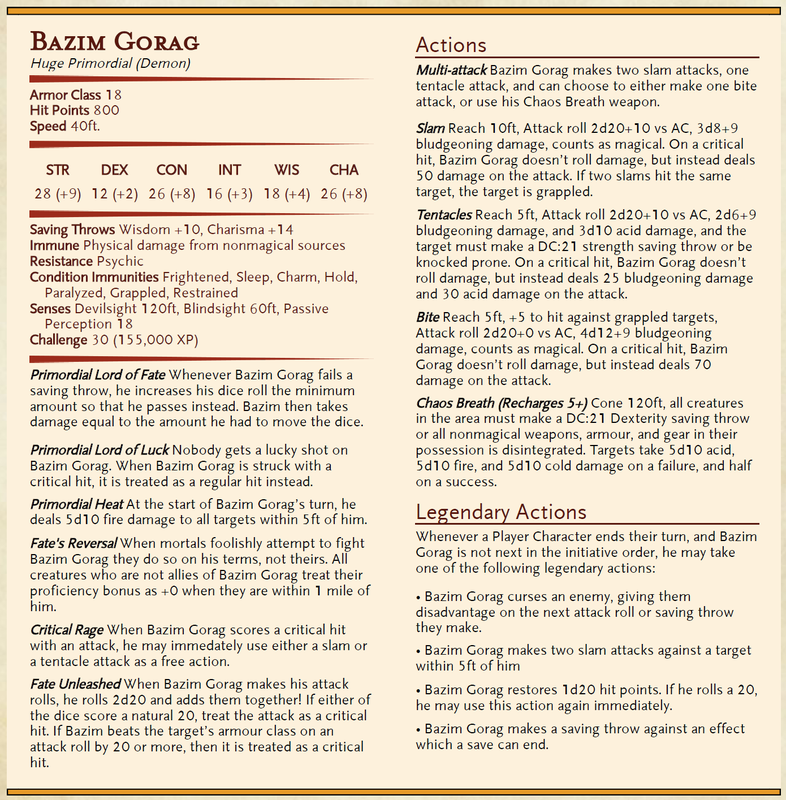

 RSS Feed
RSS Feed